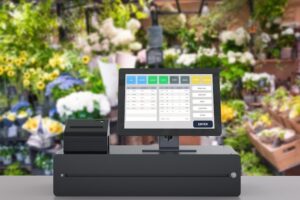From Food Packaging to Pharma: The Science Behind Compliance-Ready Label Printing
What if a single label could mean the difference between safe consumption and a product recall, between regulatory fines and...

What if a single label could mean the difference between safe consumption and a product recall, between regulatory fines and full compliance?
In today’s heavily regulated industries—particularly food, pharmaceuticals, and chemicals—this is no longer a hypothetical. According to the FDA, mislabeling in pharmaceutical products accounts for over 20% of all drug recalls.
This isn’t just about avoiding penalties. It’s about ensuring safety, maintaining trust, and meeting increasingly complex global compliance standards. Whether you’re producing ready-to-eat meals, vaccine vials, or industrial-grade solvents, your product labels aren’t just identifiers—they’re legal documents.
And getting them right starts with the right printing system.
That’s where DuraFast Label Company steps in. With a range of professional-grade label printing solutions, including color and thermal label printers, direct thermal labels, portable label makers, and affordable blank inkjet labels, DuraFast helps businesses stay compliant without sacrificing efficiency or quality.
This article will examine why regulatory-compliant labels matter so much across key industries, what makes a label compliant, and how using the right label printer is essential for staying ahead of audits, recalls, and legal hurdles.
The Compliance Challenge: What’s at Stake?
For industries governed by strict labeling rules, the stakes couldn’t be higher. Regulatory bodies such as the FDA, USDA, EPA, OSHA, and Health Canada demand that labels contain specific, accurate information—presented in a legible and enduring format.
Non-compliance doesn’t just invite fines. It can:
- Halt product distribution
- Damage brand credibility
- Lead to product recalls
- Result in civil or even criminal penalties
Let’s look at the core areas where compliance labeling plays a critical role.
1. Labeling in the Food Industry: A Matter of Public Health
Food labeling isn’t just about branding. It’s a safety protocol.
Key Regulatory Requirements:
- Ingredient transparency and allergen disclosure
- Nutritional information, including calorie count and daily value percentages
- Expiration dates and lot numbers for traceability
- Language and layout standards, including font sizes and contrast levels
Compliance Risks Without the Right Label Printer:
- Ink smearing from subpar label material or ink systems
- Inaccurate color reproduction affecting brand consistency and readability
- Labels peeling off in cold or moist environments
Solution:
High-quality color label printers and premium direct thermal labels ensure the required legibility, durability, and print precision for food labels. For example, thermal label printers can handle cold storage requirements, while inkjet printers allow fast, vivid printing for branding and nutritional data.
2. Pharmaceutical Labeling: Zero Tolerance for Error

The pharmaceutical industry operates under some of the most stringent labeling requirements globally.
Key Regulatory Mandates:
- Inclusion of drug names, dosages, usage instructions, expiration dates, and lot numbers
- Tamper-evident seals
- Compliance with standards like 21 CFR Part 11 and UDI (Unique Device Identification)
Why Compliance Matters:
- Ensures safe dosage and application
- Enables recall traceability
- Prevents counterfeit distribution
- Satisfies regulatory audits
Solution:
High-quality thermal label printers and non-topcoated direct thermal labels are common in pharmaceutical settings, especially for barcodes and tracking labels. For longer shelf life, premium topcoated direct thermal labels resist fading and moisture better. Proper calibration between printer and label material is vital to avoid scanning failures and regulatory violations.
3. Chemical Labeling: GHS Compliance and Hazard Communication
Chemical labels must comply with the Globally Harmonized System (GHS) for hazard classification and labeling.
Must-Have Label Elements:
- Product identifiers
- Hazard pictograms
- Signal words (“Danger,” “Warning”)
- Hazard and precautionary statements
- Supplier identification
Common Pitfalls:
- Pictogram distortion due to low-resolution printing
- Ink bleeding when exposed to solvents or humidity
- Non-adherent labels on drums or containers with rough surfaces
Solution:
Durable thermal label printers or color label printers capable of printing BS5609-certified labels for chemical drums are necessary. These systems, paired with industrial-grade label stock, prevent label deterioration under extreme conditions.
The Science of a Compliant Label

What differentiates a compliant label from a standard one? It’s more than text and barcode accuracy. It involves precise interaction between several variables:
1. Label Substrate: The Foundation of Compliance
The substrate—the material the label is printed on—must match the application’s environmental demands and compliance standards. It’s not just about durability; it’s about regulatory clarity, scan reliability, and chemical resistance.
Direct Thermal Labels
These labels don’t require ink, toner, or ribbons. Instead, they use a chemically treated, heat-sensitive layer that darkens when passed under a thermal printhead.
- Use Case: Perfect for short-term uses such as shipping labels, inventory tracking, and logistics.
- Compliance Considerations: Regulatory labels with limited shelf life—such as temporary box labeling or food packaging with fast turnaround—benefit from this substrate.
- Limitation: Not ideal for applications involving high heat, moisture, or long storage times, as the image can fade.
Topcoated Direct Thermal Labels
An upgraded version of standard direct thermal labels, these include a protective topcoat.
- Use Case: Ideal for outdoor use, pharmaceutical applications, or chemical storage where durability is critical.
- Compliance Boost: The topcoat enhances resistance to abrasion, moisture, UV, and chemical exposure—essential for hazardous materials (GHS) or FDA-regulated environments.
Inkjet-Compatible Labels
These are used with inkjet printers and are often blank sheets, available in matte, glossy, or waterproof finishes.
- Use Case: Suitable for short-run, full-color label printing like nutritional supplements, craft foods, or cosmetics where branding and compliance coexist.
- Compliance Tie-In: These allow inclusion of detailed information (like ingredient breakdowns, lot codes, or expiration dates) in vibrant color—important for FDA and USDA compliance.
2. Printing Technology: Precision Meets Performance
The printer must be chosen based on the type of label, the environment, and regulatory requirements. Consistency, speed, and clarity are vital for compliance.
Thermal Label Printers
- Strengths: High-speed, low-cost, and excellent for printing monochrome barcodes, QR codes, and shipping labels.
- Compliance Advantage: Barcode clarity is essential for traceability in sectors like pharma (DSCSA), food (FSMA), and logistics (GS1).
Color Label Printers
- Strengths: Produce vibrant, full-color prints for labels requiring graphical elements.
- Use Cases: Perfect for hazard communication (OSHA, GHS pictograms), retail, and consumer goods where labels need to include visual warnings or branding.
- Compliance Role: Supports printing of color-coded information, especially where international hazard labeling standards are enforced.
Portable Label Makers
- Use Cases: Great for on-site labeling in fieldwork, healthcare, inventory management, or manufacturing.
- Compliance Impact: Enables accurate labeling on demand, reducing human error in time-sensitive environments like hospitals or mobile inspections.
3. Toners, Inks, and Ribbons: The Chemistry of Permanence
Not all inks or ribbons are created equal. Compatibility between printer consumables and label substrates determines how a label withstands environmental conditions and time.
Toner & Ink Cartridges
- Inkjet Labels: Require dye or pigment-based ink cartridges—pigment inks are preferred for water and fade resistance, while dye inks offer vibrant color for branding.
- Laser Printers: Use toners that fuse with the paper, ideal for sheet-fed applications and high-volume document labeling.
Thermal Transfer Ribbons
- Waxes: Cost-effective and suitable for paper labels in dry indoor settings.
- Wax-Resin: A step up in durability, ideal for synthetic labels used in industrial or outdoor settings.
- Resin Ribbons: Maximum durability—resistant to chemicals, abrasion, moisture, and UV light. Essential for chemical drums, electronic components, or sterile medical packaging.
Compliance Connection
Using an incompatible ink or ribbon can lead to:
- Fading or smearing, which makes barcodes unreadable.
- Ink bleed, affecting legibility of safety or ingredient info.
- Non-compliance fines, especially in regulated sectors like chemical transport, pharmaceuticals, or food service.
4. Label Software and Variable Data: Real-Time Accuracy

Modern compliance demands dynamic data that changes per batch, per product, or even per unit.
Label Design Software
- Programs like BarTender, NiceLabel, or ZebraDesigner allow integration with databases, ERP systems, or MES software.
- Templates ensure that essential fields (like lot numbers, expiry dates, serial numbers, or regulatory logos) are always in the right place.
ERP/MES Integration
- Ensures real-time printing based on manufacturing or shipping data.
- Minimizes risk of human error and boosts traceability from production to distribution.
Compliance Implication
- Automated data entry reduces the chance of mislabeling, which is a leading cause of product recalls.
- Supports serialization and traceability, essential for FDA UDI, EU MDR, GHS labeling, and track-and-trace regulations.
Avoiding Common Compliance Failures
Even with the right printer, errors can occur. These are some of the most frequent compliance setbacks and how to prevent them:
- Mismatched label stock and printer type: A thermal label printer used with incompatible labels may produce faint or unreadable prints.
- Improper calibration: Leads to misaligned barcodes or incomplete graphics.
- Low-resolution outputs: Result in distorted text or unreadable barcodes.
- Environmental exposure: Heat, humidity, and chemicals can degrade untreated label materials.
Preventative Measures:
- Choose label stock rated for your application (e.g., moisture-resistant or chemical-resistant).
- Conduct print validation before mass runs.
- Regularly inspect print heads and replace worn components.
Adapting to Evolving Regulations
Label compliance isn’t static. New rules emerge frequently across jurisdictions. In Europe, for instance, evolving REACH and CLP regulations require real-time updates to chemical labeling. In the U.S., the FDA’s Food Safety Modernization Act (FSMA) and DSCSA (Drug Supply Chain Security Act) continue to refine label content and traceability demands.
Staying compliant means having a label printing system that can:
- Scale production without sacrificing print quality
- Integrate with compliance software and barcode databases
- Adapt to new label sizes and data fields instantly
Investing in the Right Label Printer: What to Consider

When selecting a printer to handle compliance labeling, businesses should assess their operational and regulatory needs.
Key Factors to Evaluate:
1. Volume Capacity
High-throughput environments need commercial-grade units.
2. Print Resolution
Essential for barcode readability and color-coded warnings.
3. Material Compatibility
Match printer type with label substrate (thermal, inkjet, etc.).
4. Mobility
For field labeling, choose compact, portable label makers.
5. Cost-Effectiveness
Affordable blank inkjet labels reduce ongoing supply costs for color applications.
Which Printer for Which Industry?
| Industry | Recommended Printer Type | Key Label Features Required |
| Food & Beverage | High-resolution color label printer | Nutritional clarity, water-resistant labels |
| Pharmaceuticals | Thermal printer with variable data support | UDI, barcodes, expiration dates |
| Chemicals | BS5609-certified thermal label printer | Hazard pictograms, solvent resistance |
| Logistics | Direct thermal label printer | Shipping labels, barcodes, batch tracking |
The Supply Side: Why Label Materials Are Just as Important
An often-overlooked part of label compliance is the material itself. Labels must be capable of withstanding the environments they’re placed in—whether that’s a freezer, lab, factory floor, or warehouse.
Popular Choices:
- Non-topcoated direct thermal labels for dry, short-duration applications
- Topcoated thermal labels for durability under friction or moisture
- Blank inkjet labels for vibrant, full-color compliance needs
- Synthetic waterproof labels for long-term outdoor or chemical exposure
The combination of printer and label must be tested and validated for the specific product lifecycle.
Why Getting It Right Matters More Than Ever
Today’s regulatory bodies have real-time inspection powers, digital reporting systems, and cross-border compliance cooperation. That means even a single misstep in your label printing can affect not just compliance but logistics, consumer trust, and business continuity.
Printing labels in-house using high-quality thermal or color label printers gives companies better control over accuracy, timelines, and costs. This flexibility also supports sustainability initiatives by reducing waste from overproduction or obsolete pre-printed stock.
Are Your Labels Ready for the Next Audit?
Most businesses don’t realize they have a labeling compliance problem—until a failed audit or recall exposes the issue. But being audit-ready isn’t just about having the right information on a label. It’s about ensuring every label you produce, regardless of quantity, meets the required standards consistently.
That’s where DuraFast Label Company makes a difference. With a robust catalog of professional-grade printers, specialty label materials, and expert guidance, DuraFast empowers businesses to take full control of their labeling process.
Whether you’re looking for thermal label printers that deliver smudge-proof codes, color printers for high-impact branding and compliance visuals, or blank inkjet labels to keep your supply flexible and cost-effective—DuraFast offers tested, compliant, and scalable solutions.
Need to meet GHS, FDA, or FSMA labeling requirements? Want to avoid product delays due to printing errors or non-compliance? Order your labeling equipment and supplies directly from DuraFast Label Company and build a print system you can trust.
Your labels are more than a finishing touch—they’re the first line of regulatory defense. Make them count.
Author Bio
Emily N. Carter is a seasoned writer and expert in the field of industrial labeling and compliance. With years of experience working with businesses across the food, pharmaceutical, and chemical industries, she focuses on helping organizations navigate complex regulatory requirements. Emily is passionate about the intersection of technology and compliance, and in her free time, she enjoys exploring innovations in printing solutions and design.




